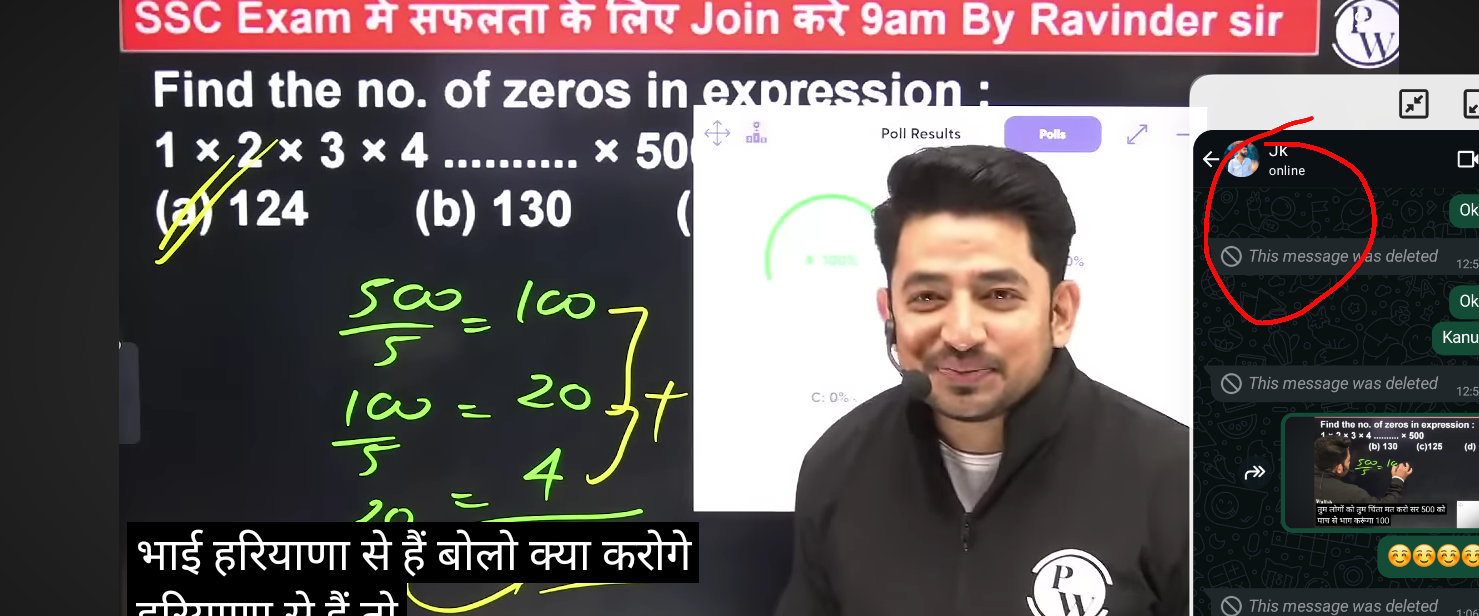Find the number of zeros in expression: 1 × 2 × 3 × 4 × ... × 50

Understand the Problem
The question is asking to find the number of zeros in the product of the sequence '1 × 2 × 3 × 4 × ... × 50'. This involves calculating the factorial of 50 and determining how many times 10 can be formed as factors from this product.
Answer
The number of zeros in the expression $1 \times 2 \times 3 \times \ldots \times 50$ is 12.
Answer for screen readers
The number of zeros in the expression $1 \times 2 \times 3 \times \ldots \times 50$ is 12.
Steps to Solve
- Finding Factors of 5
To determine how many trailing zeros are in $1 \times 2 \times 3 \times \ldots \times 50$, we need to count the number of factors of 5 in the product. This is because each trailing zero is created by a pair of factors 2 and 5, and there are usually more factors of 2 than 5 in factorials.
The formula to find the number of factors of 5 in $n!$ is:
$$ \text{Number of factors of 5} = \left\lfloor \frac{n}{5} \right\rfloor + \left\lfloor \frac{n}{25} \right\rfloor $$
- Calculating the Factors for 50
Now, we will calculate the number of factors of 5 for $50!$:
$$ \left\lfloor \frac{50}{5} \right\rfloor + \left\lfloor \frac{50}{25} \right\rfloor $$
Calculating each term:
- For $\left\lfloor \frac{50}{5} \right\rfloor = \left\lfloor 10 \right\rfloor = 10$
- For $\left\lfloor \frac{50}{25} \right\rfloor = \left\lfloor 2 \right\rfloor = 2$
So we have:
$$ 10 + 2 = 12 $$
- Final Calculation of Trailing Zeros
Thus, the total number of trailing zeros in $50!$ is 12.
The number of zeros in the expression $1 \times 2 \times 3 \times \ldots \times 50$ is 12.
More Information
The trailing zeros come from the factors of 10, which are produced by multiplying pairs of 2 and 5. In $50!$, since there are generally more 2s than 5s, the limiting factor is the number of 5s.
Tips
- A common mistake is to count the factors of 2 and assume they are equal to the number of trailing zeros. Remember, the number of trailing zeros is determined solely by the count of factors of 5.
- Sometimes, calculations for the floor functions can be miscounted; it’s essential to use the correct integer division.
AI-generated content may contain errors. Please verify critical information